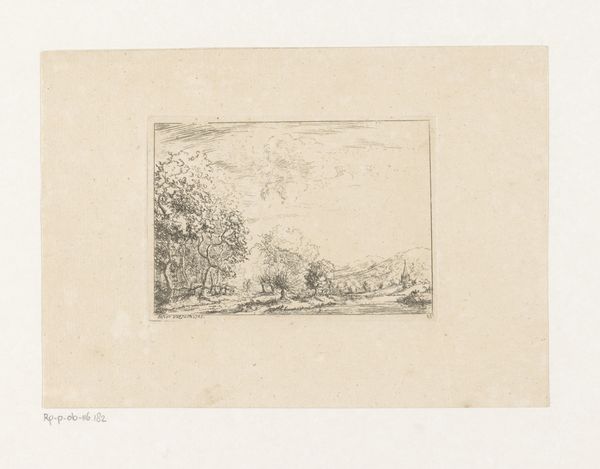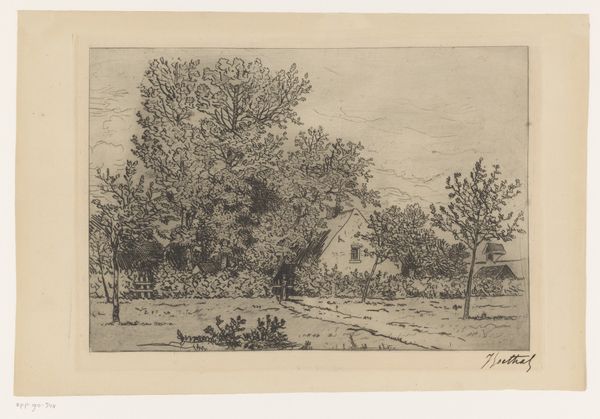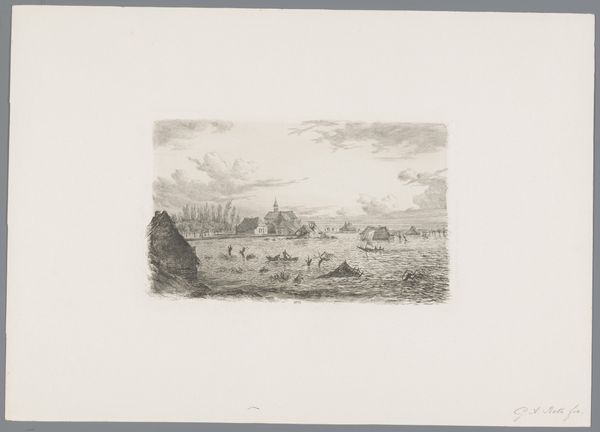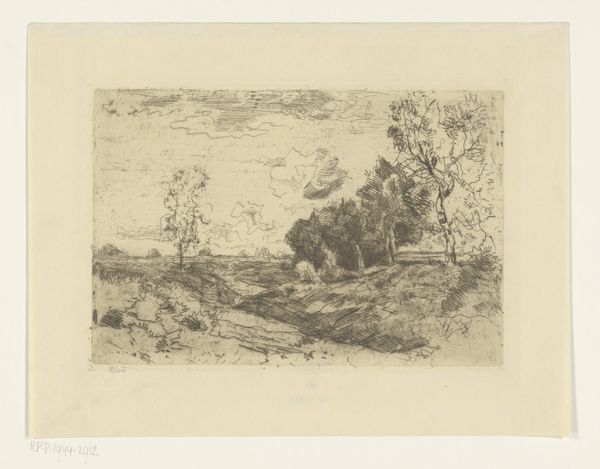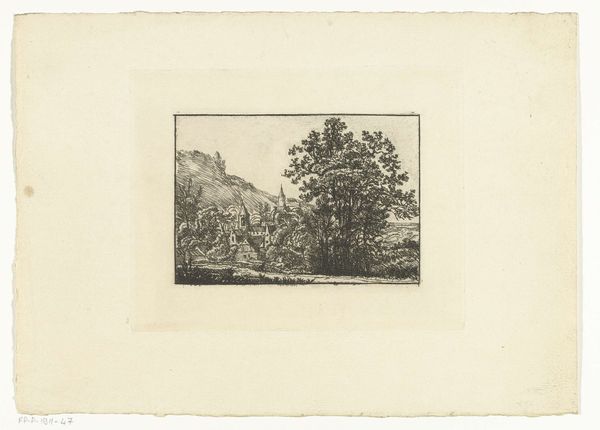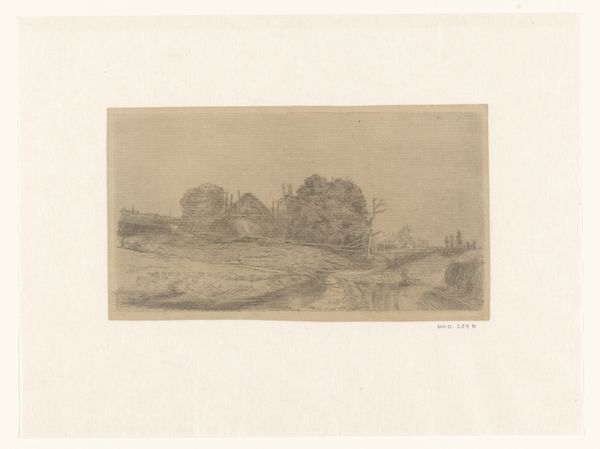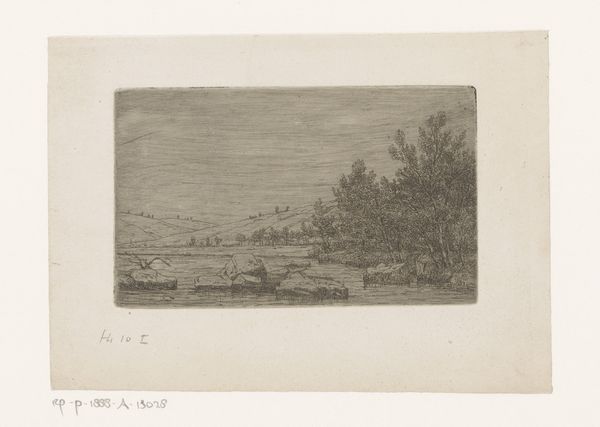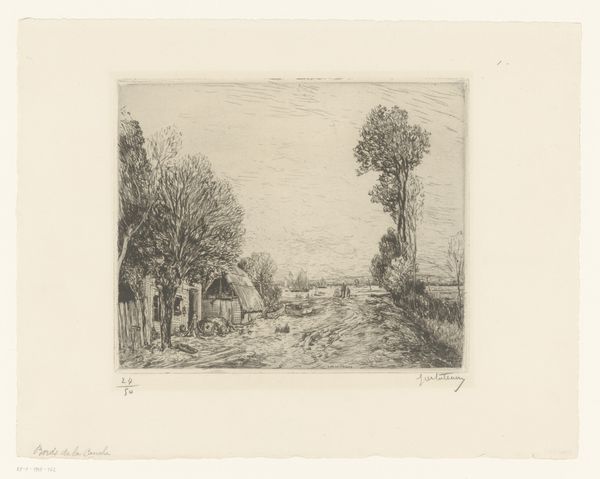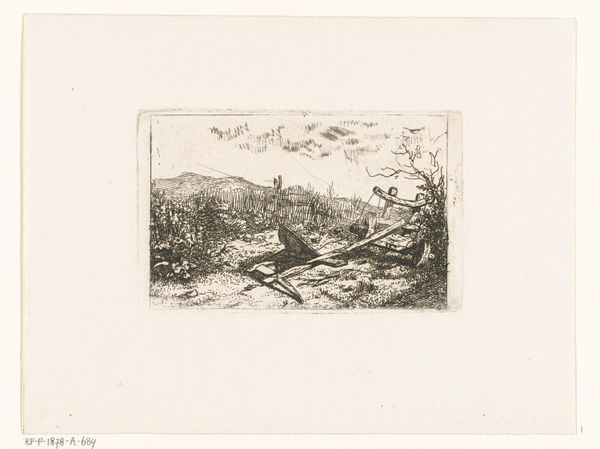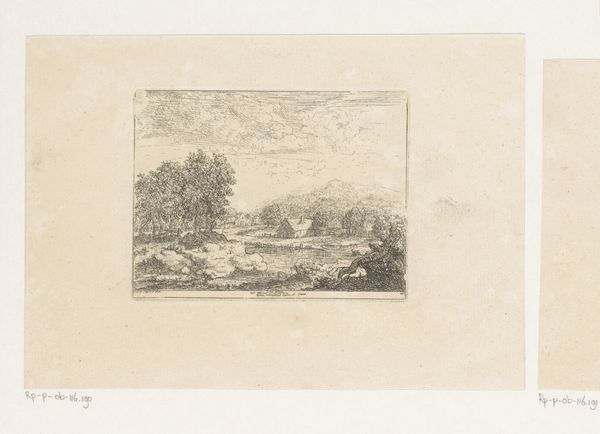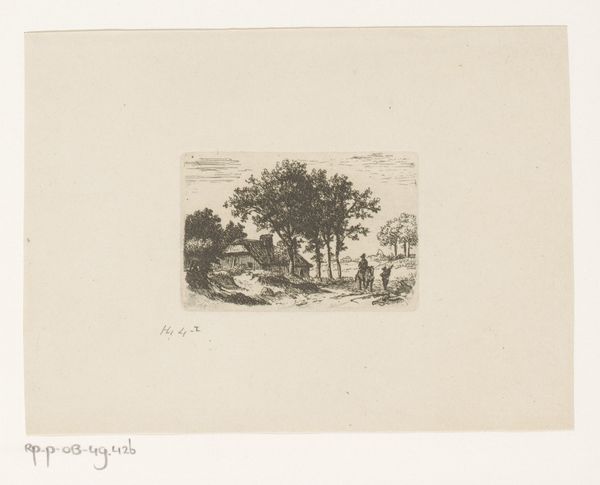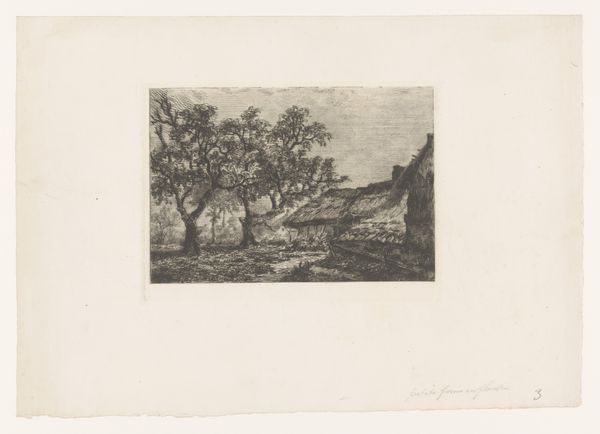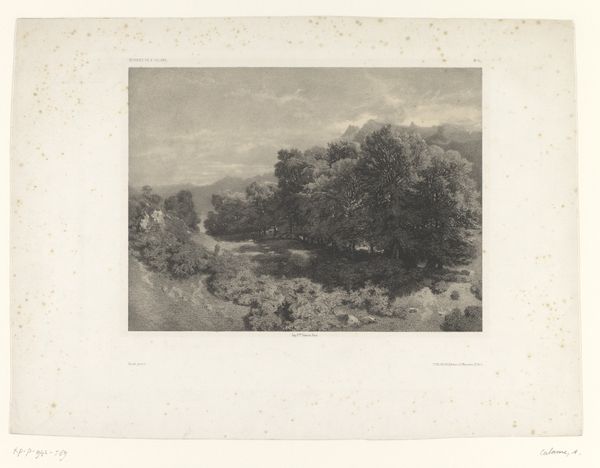
Dimensions: height 198 mm, width 256 mm
Copyright: Rijks Museum: Open Domain
Curator: Up next, we have "Gezicht op Gentilly" by Pierre-Eugène Vibert. This etching, created sometime between 1885 and 1937, presents a charming view of Gentilly. Editor: It has a very pastoral feel, wouldn't you agree? The texture alone suggests a serene rusticity. The limited palette—that near monochrome—amplifies this sense of tranquility. Curator: Yes, the impressionistic style certainly contributes to that effect. Consider the loose lines and suggestive forms—a quintessential characteristic of the genre. Vibert uses etching techniques to generate various contrasts. Editor: Indeed, but do you believe it just replicates the feeling of that era or speaks of something specific regarding the position of the viewer or Gentilly itself? There seems to be a certain tension between the romantic framing—the trees, almost as curtains—and the social commentary implied by this overview, in a context when cities and rurality where constantly negotiating their borders. Curator: Interesting point! I think that tension arises directly from the formal structure. Observe the positioning of elements within the frame. See how the artist guides our sight through this strategic placement; from the close-by organic to the geometrical town at a distance. Editor: That brings up the role of institutions as agents for artistic expression and how cultural perceptions of the area can affect even something as seemingly simple as how space is created within the frame! How urban expansion might generate new landscapes. Curator: The use of black ink also emphasizes contrast through tonal qualities. Notice that deep shade along the left side drawing the gaze forward through a calculated manipulation of space. Editor: Thank you for this deconstruction! Looking at "Gezicht op Gentilly" through a combination of our lenses provides, perhaps, a new understanding. It allows one to witness how formal properties interact within the social setting influencing it. Curator: Absolutely, analyzing the interplay of form and sociohistorical factors enhances our grasp on artistic intent and reception.
Comments
No comments
Be the first to comment and join the conversation on the ultimate creative platform.
